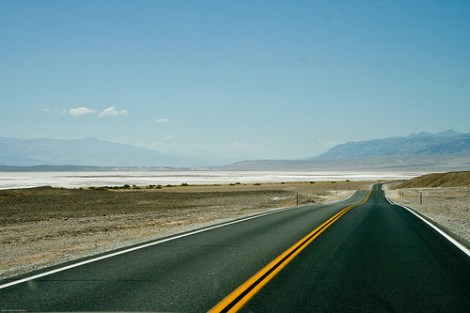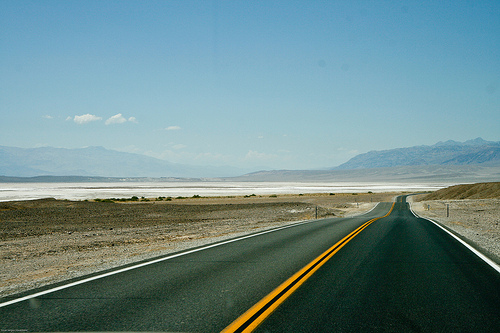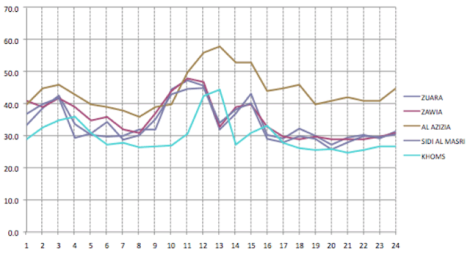Congratulations, Death Valley! You are the new record-holder for hottest temperature ever recorded — for a day in 1913.

Photo by ejharaldseid.
Here’s what happened. On Oct. 7, 1913, Greenland Ranch in Furnace Creek, Calif., recorded a temperature of 134 degrees F (56.7 degrees C). Just for the sake of emphasis, consider a balmy 67-degree day in early summer. The temperature in Death Valley was twice that.
That all-time high temperature stood for nine years, until a reading in the northwest corner of Libya, at a trading post called Al Azizia, recorded 136.4 degrees F (58 degrees C). Death Valley was bumped to No. 2.
Until 2010. Christopher Burt, a blogger at the Weather Underground, wrote a post with the matter-of-fact title, “A challenge to the validity of the world record 136.4°F (58°C) at Al Aziza, Libya.” Burt detailed the long history of questions concerning the Al Azizia reading, noting statistical aberrations from the weather station around the time of the reading.
In a new post, Burt describes what happened next.
Amazingly, [director of the climate department at the Libyan National Meteorological Center Kahlid Ibrahim] El Fadli had just uncovered a key document: the actual log sheet of the observations made at Azizia in September 1922. The log sheet clearly illustrated that a change of observers had occurred (as was evidenced by the hand written script) on September 11, 1922, just two days prior to the ostensible record temperature of 58° on September 13th. Furthermore, the new observer had interchanged the Tmin columns with the Tmax columns.
Also, beginning on September 11th the Azizia maximum daily temperature records began to exceed by 7°C, on average, the other four stations reporting from northwest Libya (Tripolitania) at that time. That trend continued for the rest of the month (with a couple of days of missing data), and into October 1922.
Original caption: “A graph comparing the daily maximum temperatures observed in September 1922 at the five meteorological stations that existed in Tripolitania (northwestern Libya) at that time. There was an observer change at El Azizia beginning September 11th.” Click to embiggen. (Image by Jim Petit.)
Just as this key discovery (the finding of the original log sheet) was made, the Libyan revolution broke out. On February 15, 2011, we received the last message from El Fadli prior to the revolution. Col. Gaddafi, the leader of Libya, had shut down Libyan international communications.
Of course, without El Fadli’s critical input we could move no further with the investigation, and [Arizona State University professor Dr. Randy Cerveny] called for a hiatus to further deliberations.
In early March, Gaddafi began airing long nightly rambling tirades on his government TV network. During one of these, he made an ominous reference to how NATO forces were using Libyan climate data to plan their assault on the country. My heart sank when I heard this. I immediately thought that our colleague, El Fadli — as director of the LNMC — must have been implicated by Gaddafi as providing weather information to the “enemy”.
I must say, at that point, I — and the rest of the committee — thought El Fadli was a dead man.
He wasn’t. He was merely out of communication — due to outages and for his own safety — and continuing work on the Al Azizia record. Research continued through 2011, exploring various statistical oddities and the discovery that the thermometer being used had a feature that made seven-degree misreadings easy to make.
In January, the World Meteorological Organization voted: The Al Azizia record was abandoned. Death Valley officially became — 99 years after it happened — the hottest place on Earth.
Weather Underground also created a documentary outlining how the record was overturned, which provides an excellent overview. We’d embed it if we could; but go take a look.





